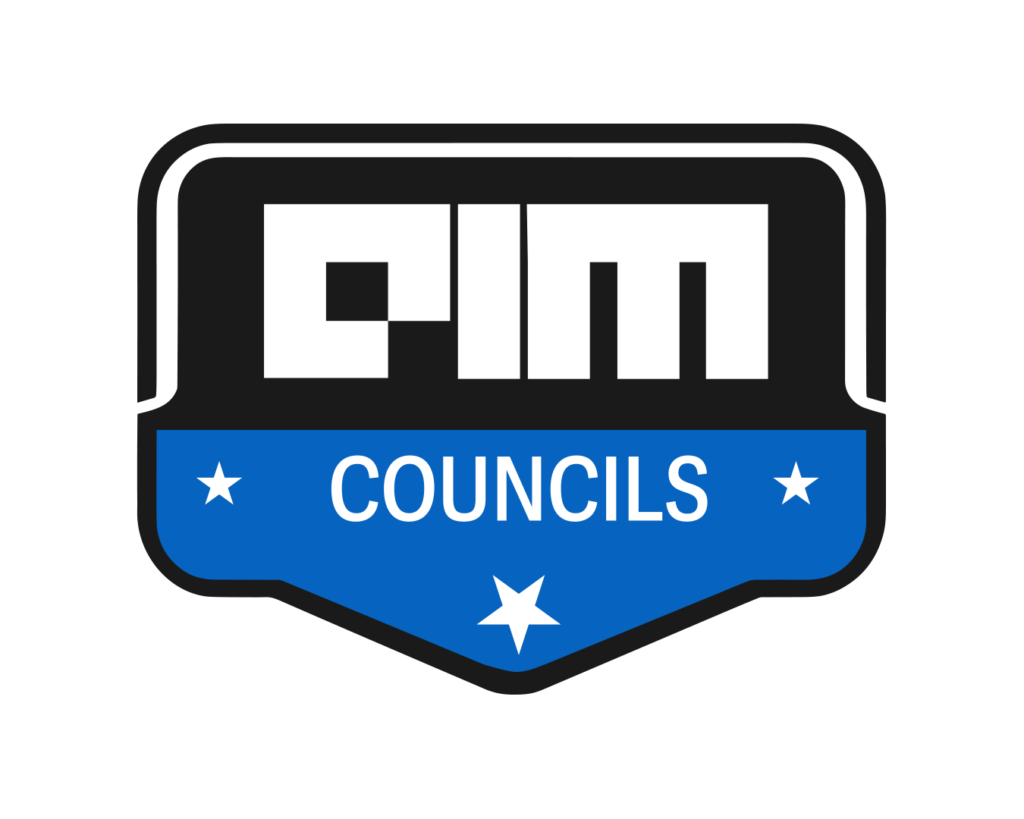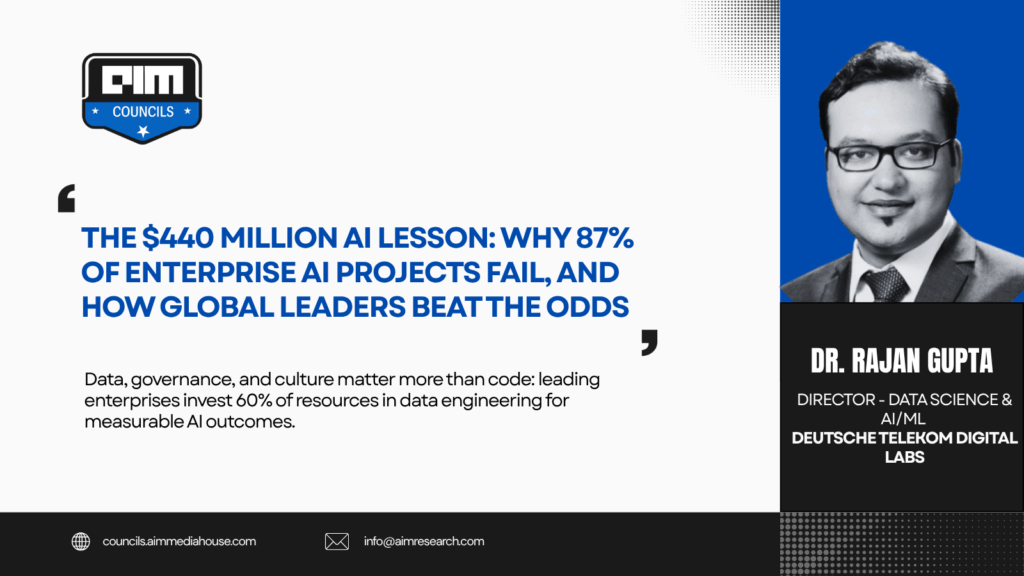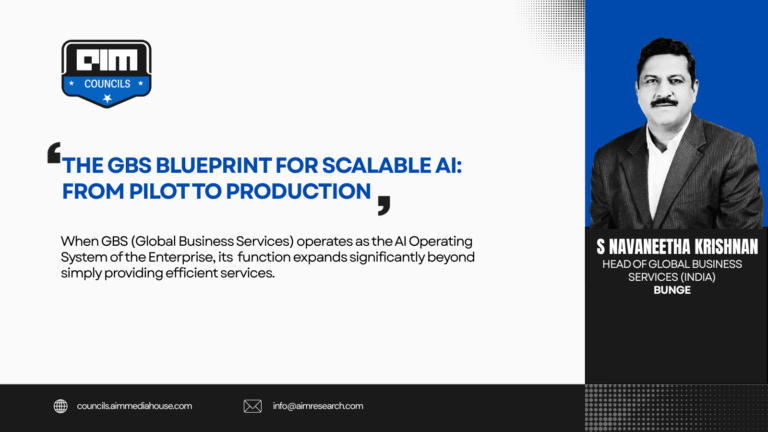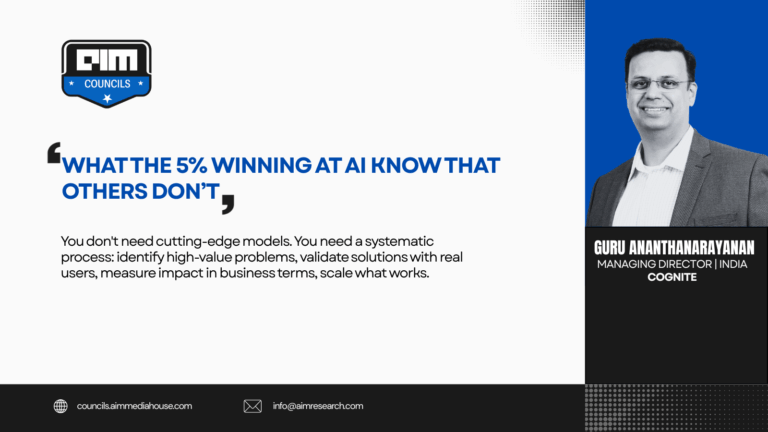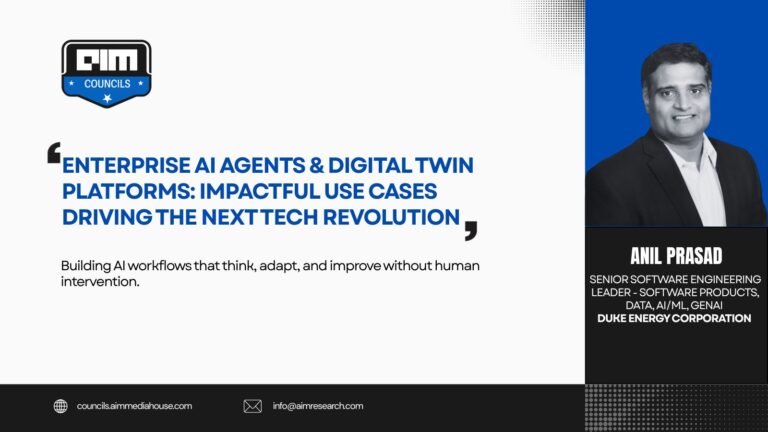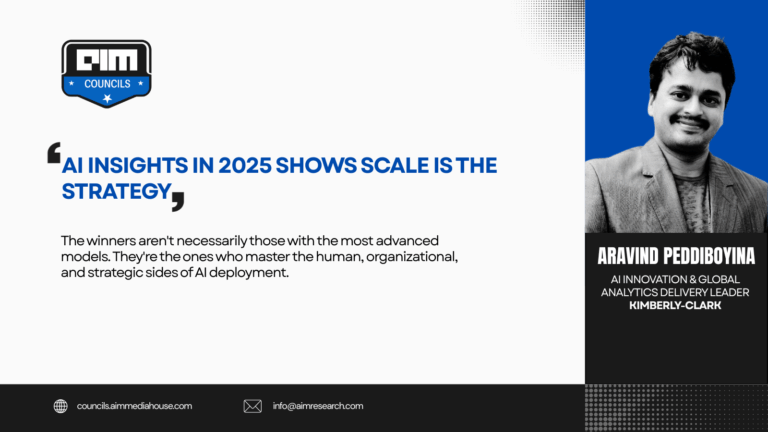The enterprise AI landscape in 2025 has split into two groups: organizations capturing exponential value and those trapped in “pilot purgatory.” The root cause here is leadership, not technology, due to a fundamental misfit between the technical resources and the organization’s preparedness. While 42% of companies abandoned most AI initiatives in 2025 (up from 17% in 2024), successful outliers demonstrate that AI scalability depends less on algorithmic sophistication and more on strategic discipline across infrastructure, governance, data engineering, and cultural transformation.
The disparity is evident. Organizations like Lumen Technologies deliver $50 million in annual savings, while Amazon’s $4 billion Watson Health collapsed and Zillow’s AI program imploded with $881 million in losses. CXOs must focus on taking technology from trial stages to working smoothly in complex markets around the world.
Strategic Infrastructure Foundation: The Anti-Fragility Imperative
Enterprise AI systems face their critical test in production operations, not controlled development environments. The challenge lies in designing systems that improve under stress, what resilience theory calls “anti-fragility”, rather than merely scaling or tolerating faults.
Knight Capital’s 2012 trading algorithm disaster illustrates infrastructure philosophy failures. A deployment glitch triggered 4 million errant trades in 45 minutes, vaporizing $440 million and collapsing the company. Anti-fragile architecture requires intentional chaos engineering: deliberately injecting failures during development to identify vulnerabilities before production deployment.
Distributed edge computing architectures, processing AI inference locally while centralizing model training, reduce latency and maintain operations during disruptions. Organizations implementing anti-fragile architectures report 50% faster deployment cycles and 70% fewer production incidents.
Governance Excellence: Human-Centric AI Adoption
AI governance failures stem from treating AI adoption as technical implementation rather than organizational transformation. Socio-technical systems theory demonstrates that technology, human behavior, and organizational culture interact complexly, ignoring any component causes system failure.
MD Anderson Cancer Center’s $62 million Watson partnership collapsed because physicians were positioned as end-users rather than co-designers. Clinical staff resisted a system disrupting workflows and providing opaque reasoning. Successful AI governance operates on the “70-20-10 rule”: allocating 70% of effort to change management and organizational readiness, 20% to data infrastructure, and merely 10% to algorithm optimization.
AstraZeneca’s drug development AI success demonstrates the alternative. Medical researchers participated as co-designers from inception, transparent processes enabled domain expert validation, and continuous feedback loops evolved the system. Financial services firms following this governance model achieve three times higher user adoption rates and require 60% fewer post-deployment modifications.
Data Engineering Mastery: The Foundation of Reliable AI
AI doesn’t fail because the algorithms are flawed, it fails because the data is. Microsoft’s Tay chatbot becoming racist and Amazon’s hiring algorithm discriminating against women both reflect training data that encoded rather than corrected historical biases. AI systems amplify patterns in training data, making data governance prerequisite for ethical deployment.
Walmart’s inventory transformation exemplifies treating data engineering as a distinct discipline. Rather than forcing existing data into AI models, the company invested two years building new collection infrastructure using computer vision, IoT sensors, and real-time integration protocols. This enabled 25-30% cost reduction and 10-15% supply chain efficiency gains.
Organizations allocating at least 60% of AI project resources to data engineering report 40% higher production model accuracy compared to traditional splits. This reflects that data preparation, cleaning, labeling, augmentation, and bias mitigation, determines whether AI models deliver value.
Cross-Industry Organizational Readiness: Culture as Competitive Advantage
AI adoption success correlates strongly with organizational culture independent of technical capability. Manufacturing sectors achieve remarkable integration rates because operational cultures already embrace continuous optimization and data-driven decision-making. Workers view AI as natural automation evolution.
Healthcare presents inverted challenges: medical professionals operate in cultures prioritizing human judgment over algorithmic recommendations. Successful healthcare AI implementations position technology as decision support maintaining clear human oversight. Germany’s national breast cancer screening program achieved 17.6% detection improvement this way.
Industries with existing automation cultures adapt to AI more readily than those built around professional expertise. CXOs must assess their organizational culture’s compatibility with algorithmic decision-making and design change management strategies accordingly.
Strategic Partnership Models: Integration-First Approach
Deutsche Telekom’s partnership with Perplexity exemplifies the “integration-first” model. Rather than building foundational AI capabilities internally, the telecommunications company focused on integration expertise and customer experience. This enabled rapid deployment across ten European markets while maintaining sustainable economics.
By embedding practical AI capabilities, restaurant reservations, travel planning, translation, into familiar interfaces, Deutsche Telekom solved actual customer problems rather than chasing technological novelty. This collaboration model allows enterprises to capture AI value without shouldering the full burden of research and development risks.
From Proof-of-Concept to Production
Enterprise AI success is rare: 87% of projects never escape pilot phase. Success requires reversing conventional approaches, starting with specific business outcomes rather than technological possibilities. Leading enterprises deploy the “inverse pyramid” strategy: define tangible financial metrics first, then architect technical solutions.
The emerging competitive battleground isn’t model sophistication, it’s human-AI integration quality. As algorithmic capabilities commoditize, sustainable advantage flows from workforce readiness, operational transparency, and organizational trust. Companies building AI-native workflows, processes fundamentally designed for algorithmic collaboration rather than bolted-on automation, capture exponential value.
This transformation demands executive commitment to cultural evolution and governance systems balancing innovation with ethical compliance. Organizations treating AI as strategic transformation, integrating technology, people, processes, and governance, will dominate AI-driven markets. The strategic choices leadership makes today will crystallize competitive positions for the decade ahead.
